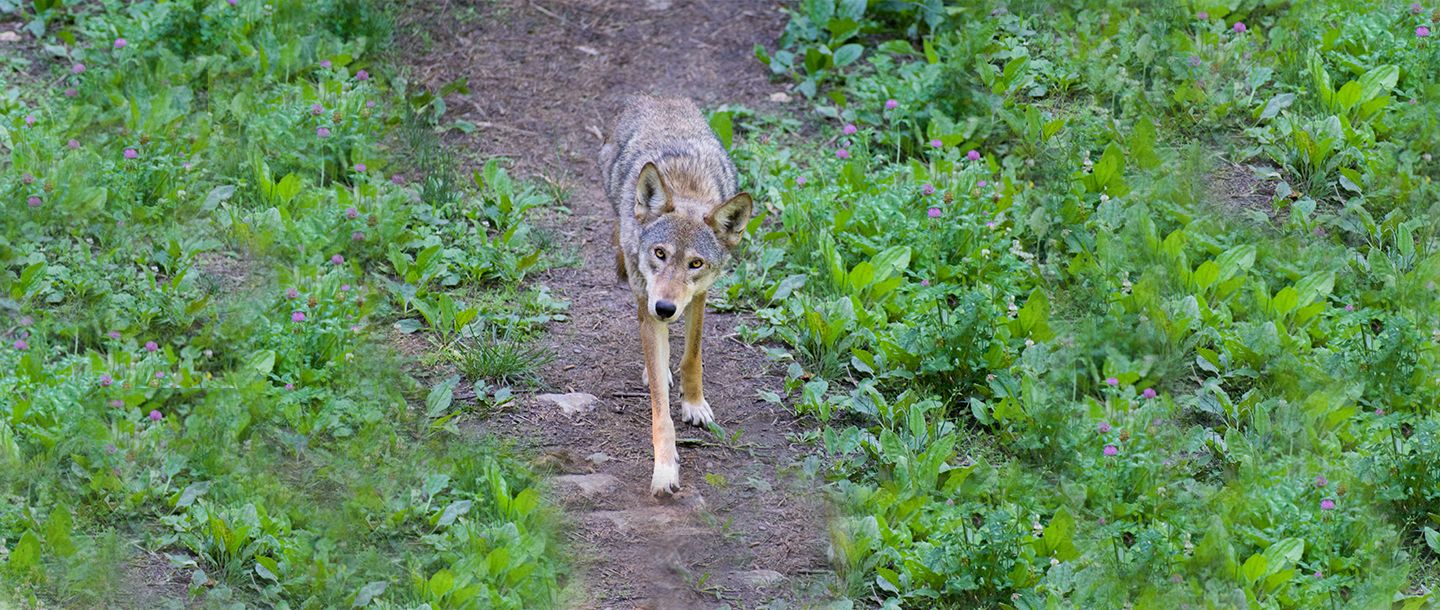The haunting howls of wolves harmonizing under a Halloween moon might be a great intro into a scary movie.
But at Oglebay Good Zoo, the howls are anything but frightful. They are the sounds of progress in the zoo’s fight to save an endangered species.
With the help of funding from Williams, the zoo in Wheeling, West Virginia, is caring for two female red wolves that could potentially be bred in coming years and then released into the wild as part of the U.S. Fish and Wildlife Service’s Red Wolf Recovery Program.
Red wolves are the second most endangered animal in the United States. They once ranged through the eastern states, but today only 20 run wild.

The red wolves at Oglebay are among only 250 managed in human care.
Oglebay had a red wolf habitat from 1990 to 2006, and during that time a remarkable 21 red wolf pups were born and raised there.
Zoo director Joe Greathouse said the U.S. Fish and Wildlife Service coordinated the zoo’s participation in the Red Wolf Species Plan again, and with Williams funding, a new habitat was created this year.
The female wolves came from Wolf Conservation Center in Salem, New York. They are shy and tend to howl mostly when nearby fire sirens go off.
“That usually sets them off and causes them to howl for about a minute or two. It’s incredible when you hear it,” Greathouse said.
The three-year-old canines don’t have names, and they aren’t afforded any play time with zoo staff. They are wild animals and the zoo intends to keep them that way.
Greathouse hopes that within a few years, the habitat can be further expanded so that mates can be brought in and if everything goes well, there will be pups again.
Red wolves tend to have one litter each year, with five to seven pups. When the pups are old enough, the U.S. Fish and Wildlife Service coordinates where wild wolves have recently given birth and introduces the zoo pups into wild litters.

It’s been centuries since red wolves were common in the Ohio Valley. Most people have never seen one, and if they did now, might have mistaken it for a coyote because of its reddish coat and small stature.
At Oglebay Good Zoo, guests can peak at the wolves from 25-feet away. An inset in the fencing creates a safe “den” for younger visitors to view the animals.
Red wolves used to be one of the ultimate predators in this region, Greathouse said.
“We are trying to hang onto that in the areas that the red wolves still inhabit in the Outer Banks region of North Carolina. If we lose a keystone predator it has a cascading effect along our entire ecosystem.”
Will Ratcliffe, manager of regulatory affairs for Williams, said the project is even more important than habitat protection.
“The Oglebay Zoo red wolf project gives Williams an opportunity to help the survival of the species itself,” he said. “We’re grateful to Joe Greathouse and Oglebay Zoo for all of their efforts and are humbled to be a helping hand for the preservation of the red wolf in the United States.“
